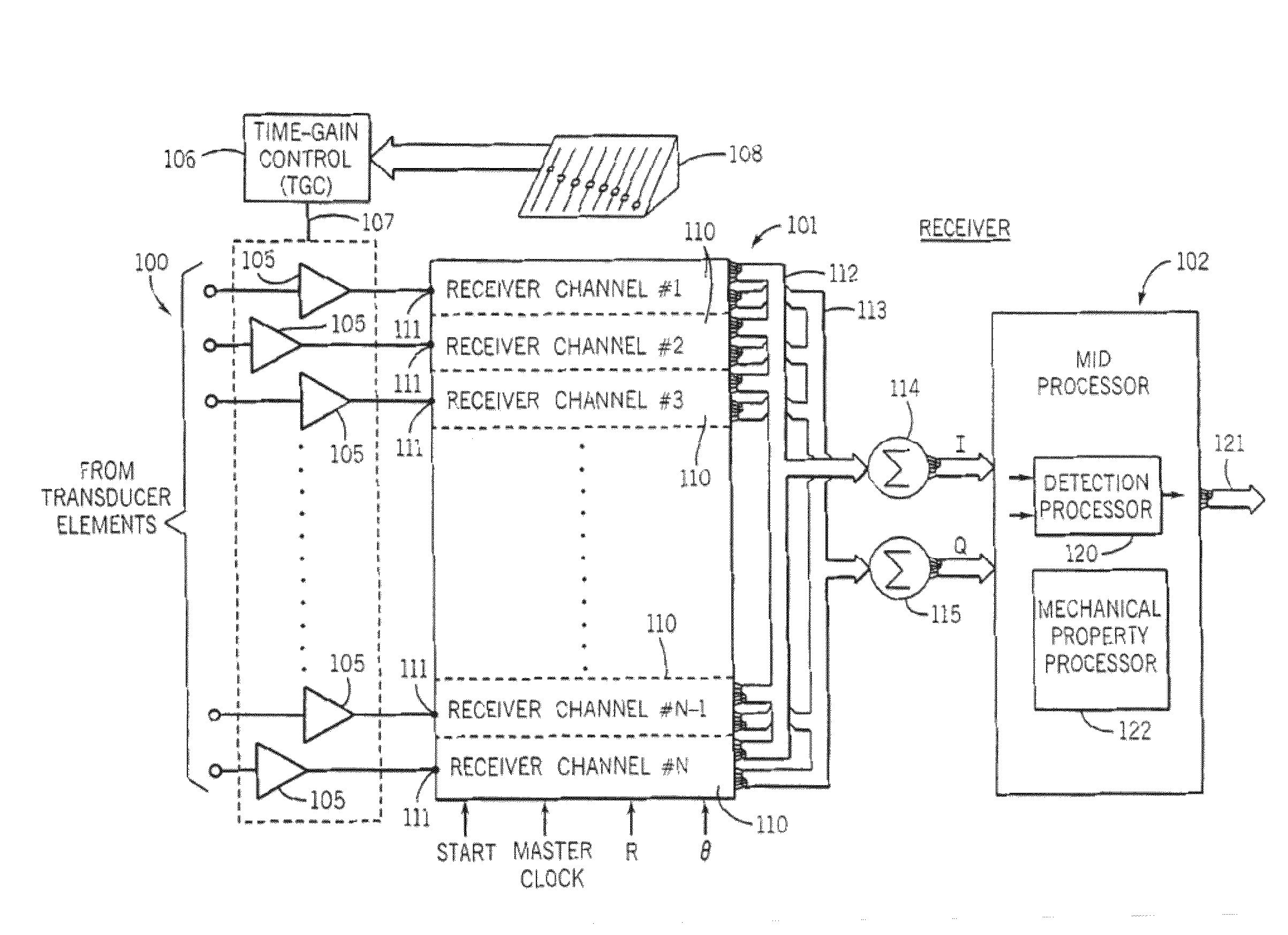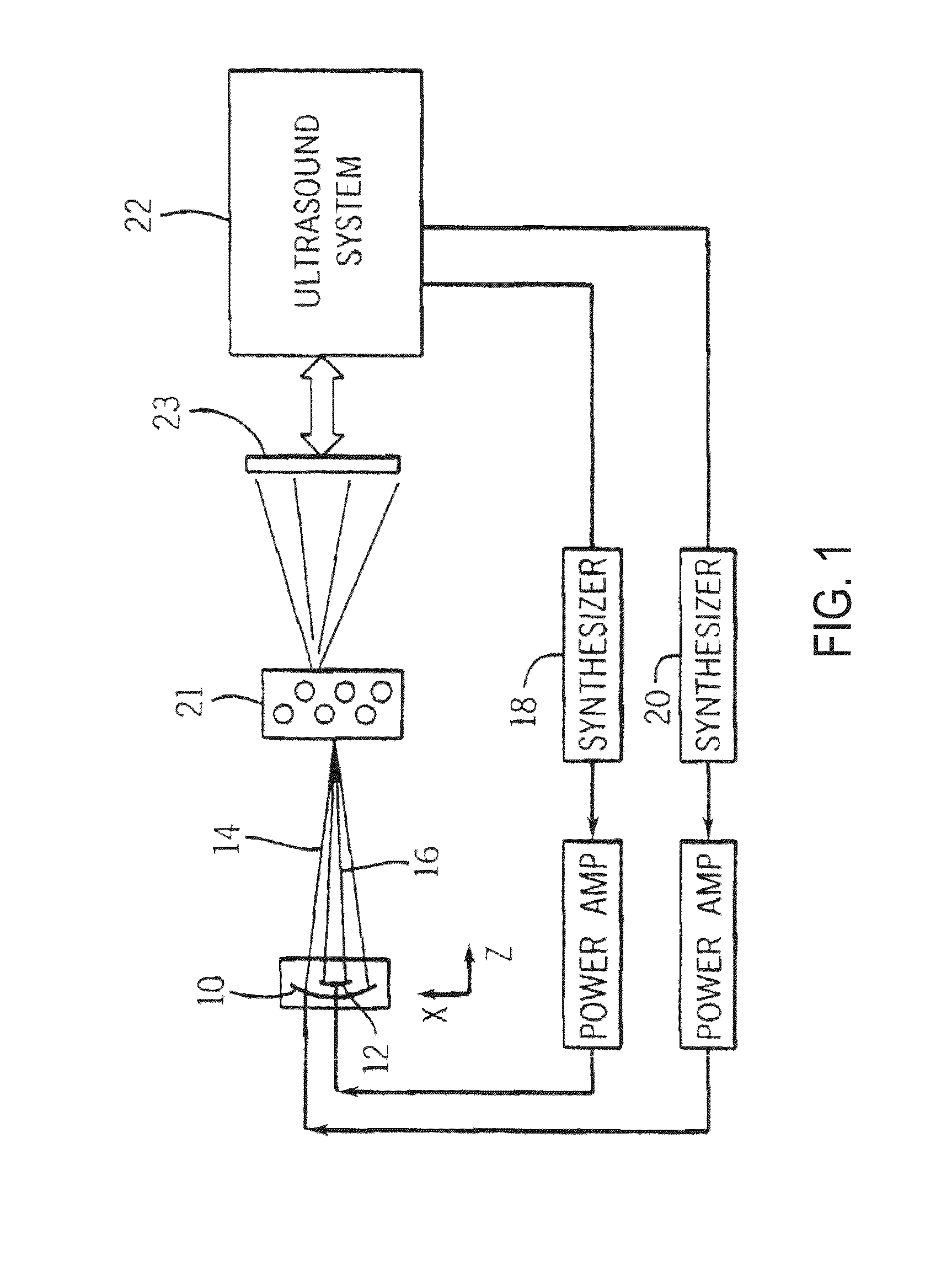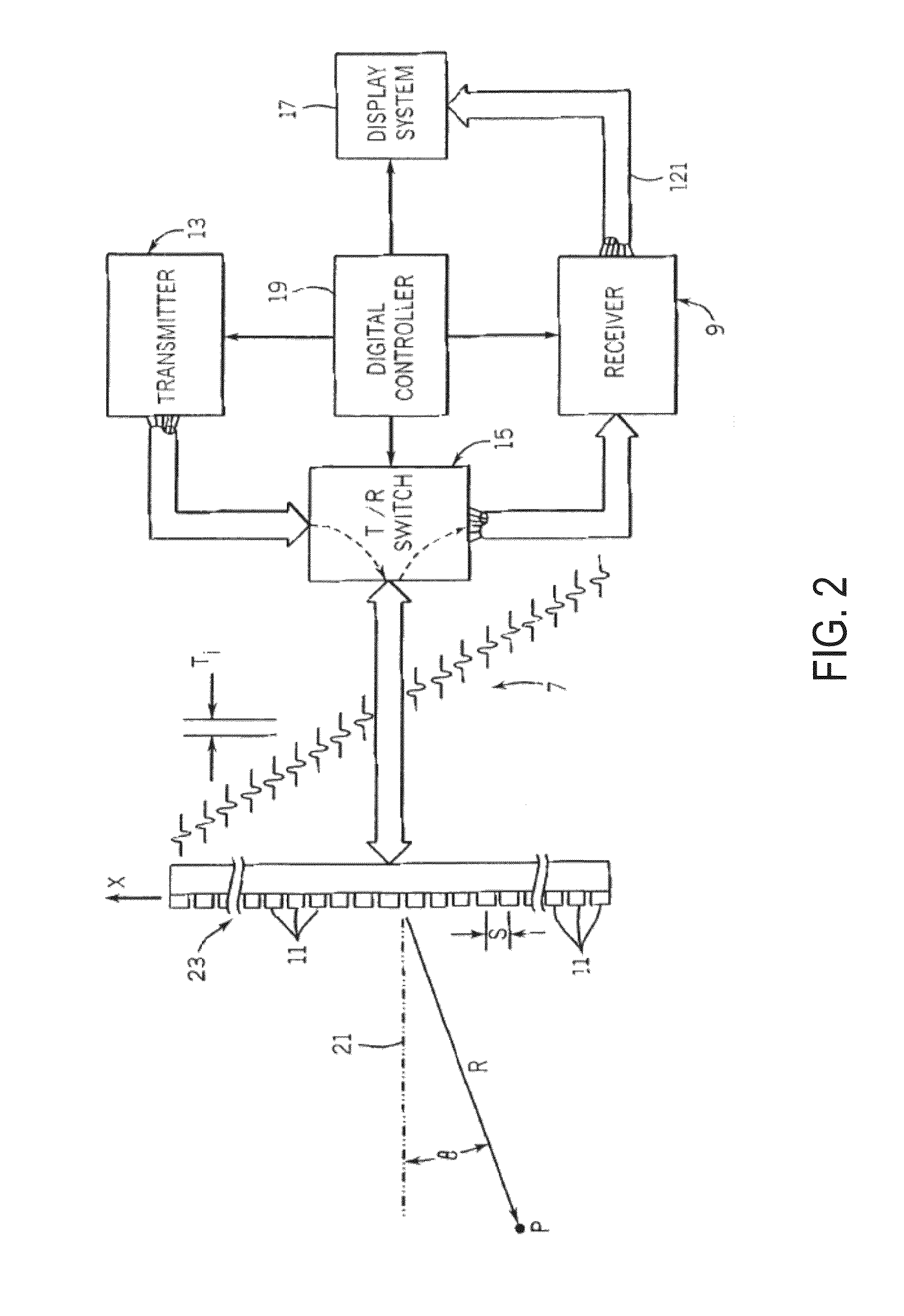System and method for non-invasive determination of tissue wall viscoelasticity using ultrasound vibrometry
a tissue wall and ultrasound technology, applied in the field of systems and methods for analyzing tissue structure and function, can solve the problems of low detrusor pressure, decreased bladder capacity, and high risk of infection, and achieve the effect of non-invasive determination of bladder viscoelasticity
- Summary
- Abstract
- Description
- Claims
- Application Information
AI Technical Summary
Benefits of technology
Problems solved by technology
Method used
Image
Examples
Embodiment Construction
[0029]Ultrasound elastography methods have been used to measure elasticity of various soft tissues. During the past decade, several techniques based on acoustic radiation force (ARF) have been developed to study tissue elasticity. Supersonic shear imaging uses ARF to induce a shear wave in tissue and produce a map of shear elastic modulus of the tissue. More recently, Shearwave Dispersion Ultrasound Vibrometry (SDUV) has been developed for measuring tissue elasticity and viscosity.
[0030]The above techniques are generally designed assuming wave propagation in the bulk tissue (theoretically without boundaries), for applications in organs such as breast, liver, kidney, muscle and prostate. The above techniques also assume that the tissue being examined is infinitely thick. However, this assumption is not appropriate for bladders, where the expected bladder wall thickness would be at most a few millimeters. Additionally, current models in the above-mentioned methods are not appropriate ...
PUM
 Login to View More
Login to View More Abstract
Description
Claims
Application Information
 Login to View More
Login to View More - R&D
- Intellectual Property
- Life Sciences
- Materials
- Tech Scout
- Unparalleled Data Quality
- Higher Quality Content
- 60% Fewer Hallucinations
Browse by: Latest US Patents, China's latest patents, Technical Efficacy Thesaurus, Application Domain, Technology Topic, Popular Technical Reports.
© 2025 PatSnap. All rights reserved.Legal|Privacy policy|Modern Slavery Act Transparency Statement|Sitemap|About US| Contact US: help@patsnap.com



